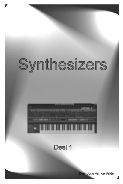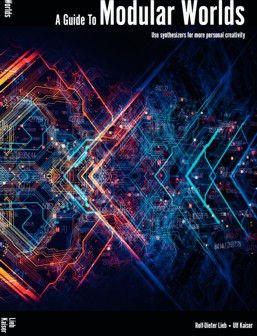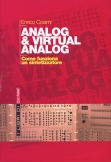|
A-100 Further Reading |
|
| The resources in the following list should help you increase your knowledge of analog synthesis, and the skill with which you can use modular systems like the A-100. Please don't hesitate to contact us if there is any publication missing in the list. | |
|
Specialist books |
|
|
|
Rolf-Dieter
Lieb and Ulf Kaiser: A Guide To Modular Worlds, ISBN: 2147483647, English
language, publisher: SynMag Germany
This book
is about synthesis, the underlying technical specifications with added interviews of artists and manufacturers. |
|
|
Keld
N. Sørensen: Modular synthesizers, ISBN 87-90958-67-5 (Danish
language) This
book is meant to be a manual for synthesizers, and modular synthesizers in
particular. I´ve chosen to focus on this, as there is no manuals for these
“wonder machines” apart from a
description of the indvidual modules – Which comes with the purchase. There
are no instructions on how to connect the modules or how many and what modules
you´ll need to make useful sounds with a modular system. |
|
Enrico Cosimi: Analog & Virtual Analog / Come funziona un sintetizzatore, supplemento alla rivista Chitarre, ISBN 88-900846-9-3 (Italian language) The book explains all the modules that occur in an analog modular synthesizer. Real analog synthesizers are described as well as virtual analog ones. Many of the real modules are explained by means of A-100 modules. Contains a lot of pictures of vintage synthesizers and A-100 modules and systems. The book can be ordered directly from the author Enrico Cosimi: ecosimi@chitarre.com |
|
 |
Joris Van de Velde :
Synthesizers (Dutch language), Publisher
For Dutch reading people, here is a book which explains you how synthesizers do work. Modular systems like the A-100 are explained module by module. What do they do, how and why. Then we start patching, connecting one module to the other one. Modulating the filter with an LFO, setting up a sequencer to an oscillator, starting the envelopes, etc. From simple patchings to advanced patching methods. Creating possibilities which enhance a simple setup to a grand modular system. The book can be ordered for 35 Euro only from the author website : http://vdvb.be/audiocollage |
|
Allen
Strange, Electronic Music Systems, Techniques and Controls, 2nd
edition, Wm. C. Brown Co. Publishers, Iowa, USA. ISBN
0-697-03602-2* This book by Allen Strange is very comprehensive and thoroughly recommended, because as well as all of the basics it also includes a huge number of patches and practical tips. It’s easy to read, instructive and very well organised . but hard to find.... The email address of Dr. Allen Strange that was published here is no longer valid.st@ma |
|
|
Vail,
Vintage Synthesizers, GPI Books / Miller Freeman Inc. San
Francisco, 1993, ISBN 0-87930-275-5* A background read rather than great technical help. |
|
|
Synthesizer
Technique ISBN 0-88188-715-3 and Synthesizer Basics ISBN
0-88188-714-5 revised re-prints of very useful and authoritative articles from Keyboard magazine, by Moog, Rhea, Milano, Coster, Duke, Powell, Gleeson, DeFuria, Anderton, et al. |
|
|
Crombie,
The Synthesizer & Electronic Keyboard Handbook ISBN 0 330
28681 1, and The New Complete Synthesizer ISBN 0-7119-0701-3 The latter especially is a good general introduction. |
|
|
Trythall,
Principles and Practice of Electronic Music, 1973, ISBN
0-448-40002-6 an early classic. |
|
|
Forrest,
The A-Z of Analogue Synthesisers Part One (A-M), ISBN 0 9524377 0 8*, and Part Two (N-Z), ISBN 0 9524377 1 6* : Susurreal, England. tel +44 (0)1363 774627, fax +44 (0)1363 777872 |
|
|
Chamberlin, Musical applications of microprocessors, Hayden Book Company, Rochelle Park / New Jersey, 1980, ISBN 0-8104-5773-3 *
Only the books whose ISBN numbers are followed by an
asterisk are definitely in print as of Dec 1997. |
|


